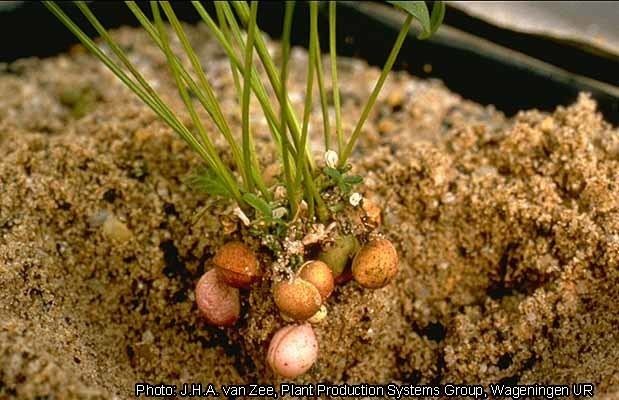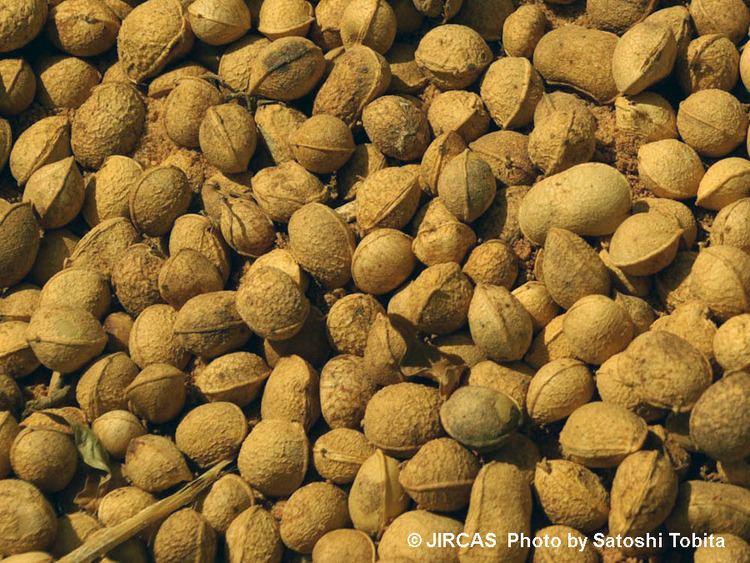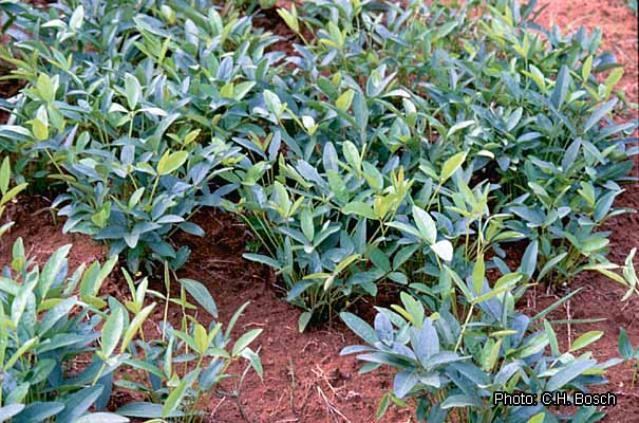Rank Species | Genus Vigna Higher classification Cowpea | |
 | ||
Similar Black‑eyed pea, Cowpea, Pigeon pea, Geocarpa groundnut, Moth bean | ||
Bambara groundnut vigna subterranea repotted ninja gardening episode 36
Vigna subterranea (also known by its common names Bambara groundnut, Bambara-bean, Congo goober, earth pea, ground-bean, or hog-peanut) is a member of the family Fabaceae. The plant originated in West Africa. Vigna subterranea ripens its pods underground, much like the peanut (also called a groundnut). They can be eaten fresh or boiled after drying.
Contents
- Bambara groundnut vigna subterranea repotted ninja gardening episode 36
- Bambara groundnut vigna subterranea seedling ninja gardening episode 7
- Names in other languages
- Origin and regions of cultivation
- Importance in the world food system
- Culinary use
- Soil requirements
- Climate requirements
- Cropping system
- Fertilization
- Production
- Pest and diseases
- Growth
- Generative reproduction
- References

Bambara groundnut vigna subterranea seedling ninja gardening episode 7
Names in other languages

The name for the Bambara groundnut in the Bambara language of Mali (Bamanankan) is tiganingɛ(L.)n or tiganinkurun, literally "little hard peanut" (peanut is tiga). Among other West African languages it is known by other names; in Hausa it is variously referred to as Gurjiya or Kwaruru. In Goemai, Kwam; and in Kanuri, Ngangala; in Ibo, Okpa and in Ga, Akwei. In the Upper East Region of Ghana, it is referred to as "Suma".

Bambara groundnuts are also known as jugo beans or in Swahili, njugumawe. In the Republic of Zambia, bambara groundnuts are known as either Lituhu (siLozi), ntoyo (ciBemba),katoyo (kiKaonde), or mbwiila (chiTonga). In the Angolan plateau the plant is known as viẽlõ in the local Umbundu language, while in Angolan Portuguese it is mostly called feijão-gengibre (meaning ginger-bean). In Shangaan they are known as tindluwa. In Malagasy, the language of Madagascar, they are known as voanjobory, which translates to "round peanut." Interestingly enough, in the Ghanaian Ewe language, they are known as azi nogui, which also translates to "round peanut." Also, in the Dagbani language of the Dagombas in Northern Ghana, it is called 'simkpla', which also translates literally as 'round peanuts'. In Indonesia it is called "kacang bogor", which literally means "Bogor peanut", because this plant is widely cultured in Bogor, West Java. It is called "kacang poi" in Malay language, not to be confused with "kacang pool" which serves as one of popular dishes in the southern region of Malaysia. In the Shona language of Zimbabwe it is known as "Nyimo", and "indlubu" in the ndebele language. In Silozi, they are called 'Lituu.' In Oshiwambo language of Namibia, it is called "ofukwa" for singular or "eefukwa" for plural.
Origin and regions of cultivation

The origin of the Bambara groundnut is West Africa and the region of cultivation is Sub-Saharan Africa's warm tropics.
Importance in the world food system
Bambara groundnut represents the third most important grain legume in semi-arid Africa. “It is resistant to high temperature and is suitable for marginal soils where other leguminous crops cannot be grown”. In addition, it makes very little demand on the soil and has a high nutritive value with 65% carbohydrate and 18% protein content. For these reasons it is not prone to the risk of total harvest failure even in low and uncertain rainfall regions. "Due to its high protein value it is a very important crop for people in Africa Despite its nutritional value, it is still considered as one of the prioritized neglected and underutilized species in Benin.
Culinary use
The seeds are used for food and beverage because of its high protein content and for digestive system applications. The entire plant is known for soil improvement because of nitrogen fixation. In West Africa, the nuts are eaten as a snack, roasted and salted, or as a meal, boiled similar to other beans.
In South Eastern Nigeria, particularly in Enugu, the dried bambara beans are ground into a fine powder, then mixed with palm oil, water and pumpkin leaves and then poured into banana leaf wraps or 1 litre cellophane bags before being boiled into a kind of cakey pudding to make Enugu's most popular delicacy called "okpa" okpa is the number 1 breakfast item in Enugu, Nsukka and Ngwo Nigeria.
during the rainy season in many parts of central Nigeria like Jos, the fresh bambara beans are cooked with their shells still on them. the beans are then eaten as a snack just like boiled groundnuts.
Soil requirements
Optimal soils for Bambara groundnut production are sandy soils to prevent waterlogging. Optimal soil depth is between 50 and 100 cm, with a light soil texture. soil fertility should be low and soil pH is best suited between 5 and 6.5 and should not be lower than 4.3 or higher than 7.
Climate requirements
The production is best suited between a latitude of 20° - 30°, i.e. the tropical wet and dry (Aw) and the subtropical dry summer (Cs) climate zones. Optimal temperature is between 19 °C and 30 °C. Temperatures below 16 °C and above 38 °C are not suited for the production of bambara groundnut. The bambara groundnut is very drought resistant. The minimal annual rainfall requirement is about 300 mm and optimal annual rainfall is between 750 mm and 1400 mm and should not exceed 3000 mm.
Cropping system
The cropping system is semi-permanent and the Bambara groundnut can be cultivated as single crop or as intercrop. Best suited intercrops are sorghum, millet, maize, groundnut, yams and cassava.
Bambara groundnut is mainly cultivated as intercrop, however the planting density varies between 6 and 29 plants per square meter. For woodland savannas of Côte d'Ivoire the highest yield is attainable with a plant density of 25 plants per square meter.
Fertilization
Since Vigna subterranea is usually intercropped, no fertilizer is applied. A yield of 1000 kg seed and 925 kg leaves remove 55.7 kg N, 26.2 kg K, 25.1 kg C, 7.8 kg P and 6.6 kg Mg. Since Bambara groundnut is a legume, phosphor is the most important nutrient. An application rate of 60 kg/ha of P2O5 is recommended for bambara groundnut in Yola, Adamawa State Nigeria.
Production
World production of Vigna subterranea increased from 29'800 tonnes in 2015. in 1972 to 79'155 tonnes
Pest and diseases
Pest and diseases are not considered to be a serious problem for Vigna subterranea.
Reported diseases:
Reported pests:
Growth
The growth cycle is between (min-max) 90–170 days and under optimal conditions the cycle is about 120–150 days to pod maturity. Flowers appear 40–60 days after planting. 30 days after pollination the pod reaches maturity and during another 55 days the seeds fully develop. Every 30 days they are produced again.
Generative reproduction
Generative reproduction is for the Bambara groundnut autogamous (self-fertilization) and cleistogamous (self-pollinating).
